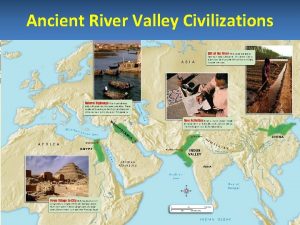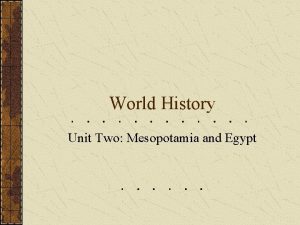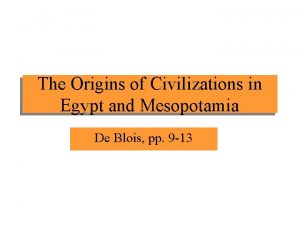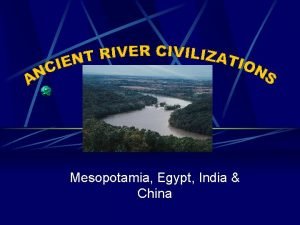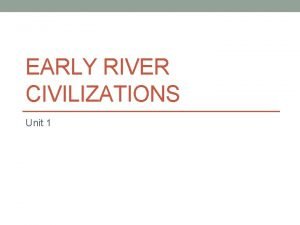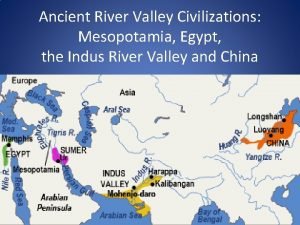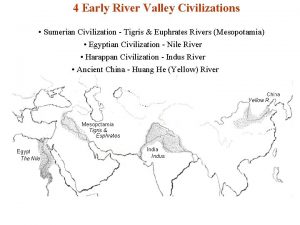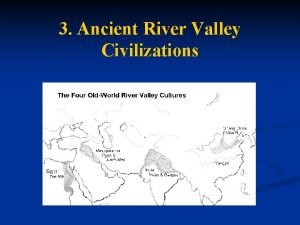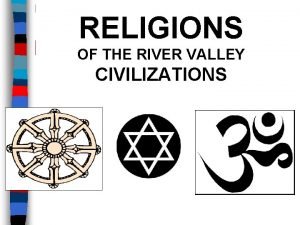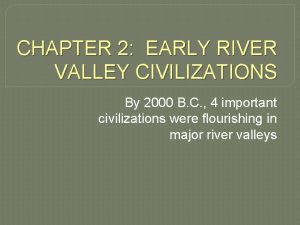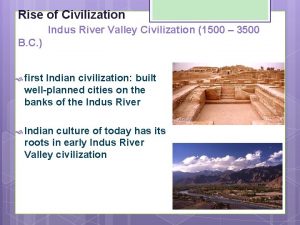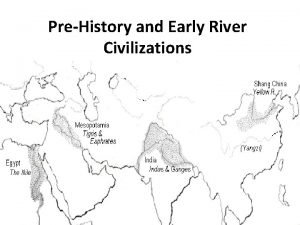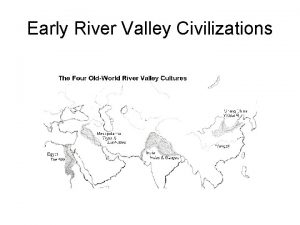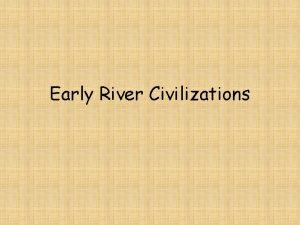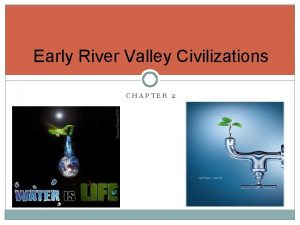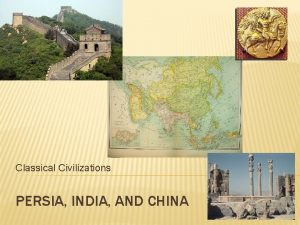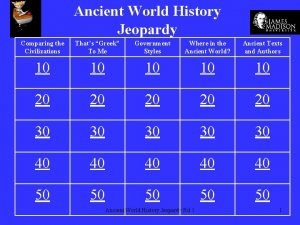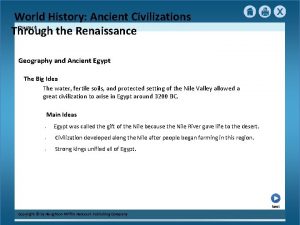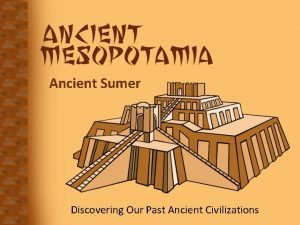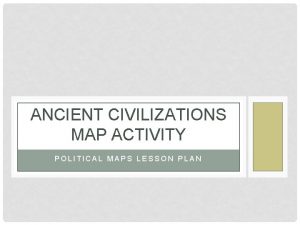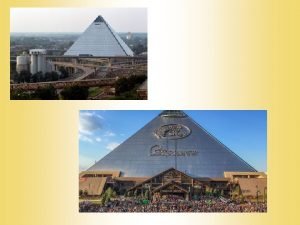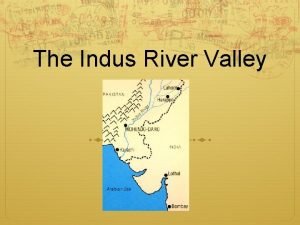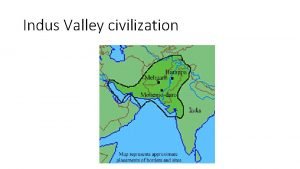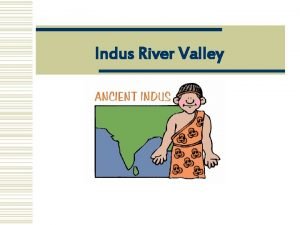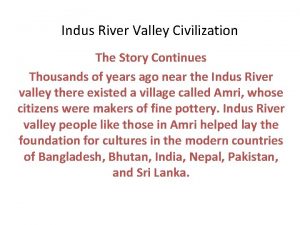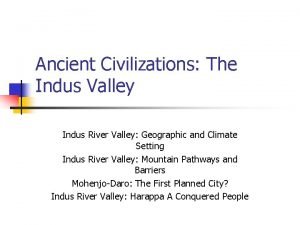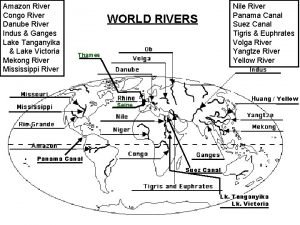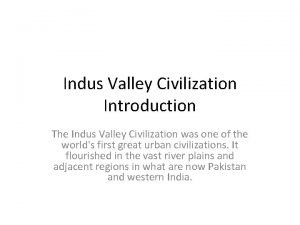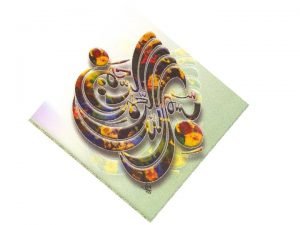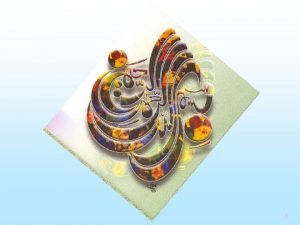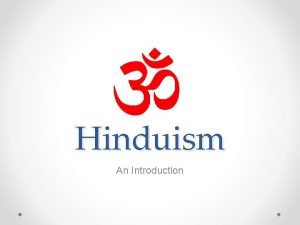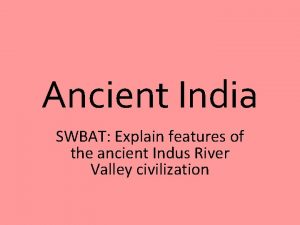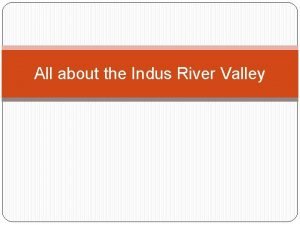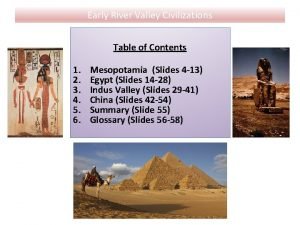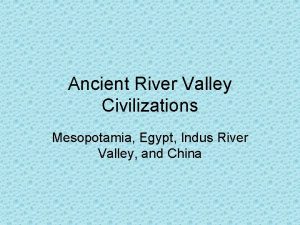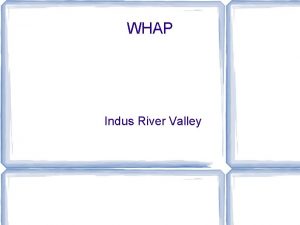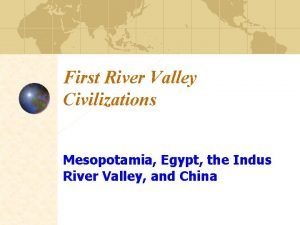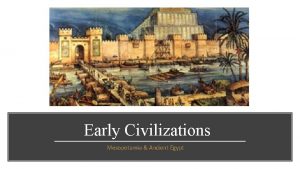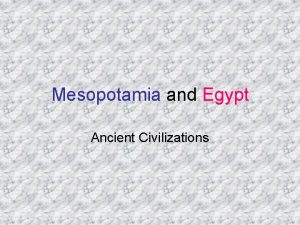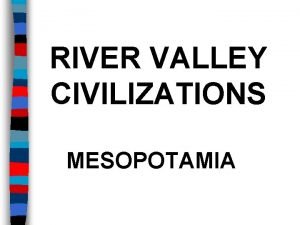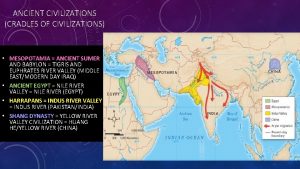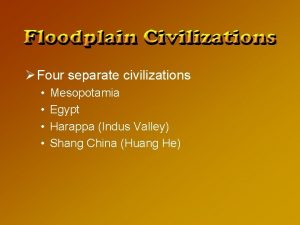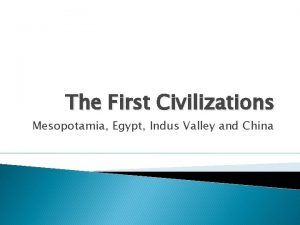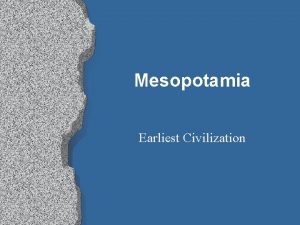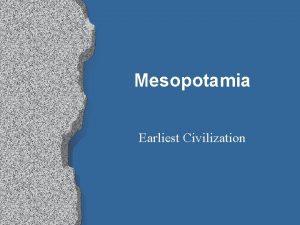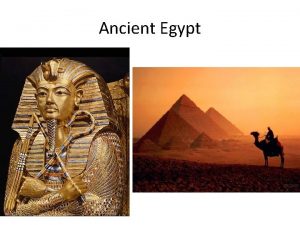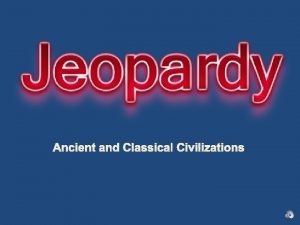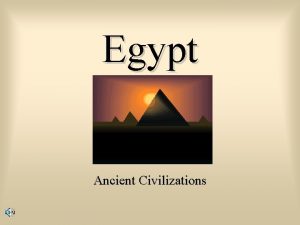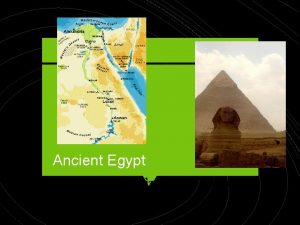Ancient Civilizations Unit I Mesopotamia Egypt Indus River







































- Slides: 39

Ancient Civilizations Unit I Mesopotamia Egypt Indus River Valley China

SSWH 1 a • The Agricultural Revolution is when people learned how to farm and domesticate animals… What is another name for the Agricultural Revolution

Answer • Neolithic Revolution

SSWH 1 a • Most nomadic people in Mesopotamia had this type of religious belief

Answer • Polytheistic

SSWH 1 a • This king left his legacy of a legal system by creating a law code, which was based on the idea of “an eye for an eye”

Answer • Hammurabi

SSWH 1 a • Nomads were known to travel from place to place looking for food. This means they would be good _______.

Answer • Hunters and Gatherers

SSWH 1 a • Mesopotamia was the location of the City of Ur, which was a major city in this civilization

Answer • Sumer

SSWH 1 a • The land from Modern day Israel, Turkey to Iraq is know as

Answer • The Fertile Crescent

SSWH 1 b • Pharaohs were able to keep their political and religious power because they were…. .

Answer • Seen as living gods on Earth

SSWH 1 c • This religion was seen as one of the earliest forms of monotheistic religions, which believed in struggle between good and evil on earth and a judgment day.

Answer • Zorastrianism

SSWH 1 c • The Hebrews most significant contribution to western civilization was a strong….

Answer • Monotheistic Religion

SSWH 1 d • This civilization built an extensive trade network throughout the Mediterranean, which meant they were good at shipbuilding

Answer • Phoenicians

SSWH 1 e • The Sumerians created this form of writing using wedge shapes. • The Egyptians use pictograms to create this form of writing. • This was used to decipher the Egyptian language.

Answer • Cuneiform • Hieroglyphics • Rosetta Stone

SSWH 2 a • A time of prosperity, introduction of math, science and art to the Gupta Empire was known as _____

Answer • The “Golden Age”

SSWH 2 b • Which religion moved quickly to the east as it did not mix well with another religion in India?

Answer • Buddhism

SSWH 2 b • This term in Buddhism means that every individual has a duty to perform in their life.

Answer • Dharma

SSWH 2 b • The Four Noble Truths believes the elimination of _______ will stop people from suffering.

Answer • Desire

SSWH 2 c • This belief system had a lasting effect on Chinese Dynasties.

Answer • Confucianism

SSWH 2 d • Brining peace and giving land to the peasants is a sign that a dynasty has _____

Answer • The Mandate of Heavan

SSWH 2 d • The examination system introduced by Confucius determined ________.

Answer • Who would be good in the government based on what they know, not who they know

SSWH 2 e • What helped Indian empires remain isolated for many years?

Answer • Natural boundaries… Himalayas and Hindu Kush
 Yellow river civilization map
Yellow river civilization map Ancient river valley civilizations powerpoint
Ancient river valley civilizations powerpoint Site:slidetodoc.com
Site:slidetodoc.com Egypt vs mesopotamia
Egypt vs mesopotamia Map of mesopotamia egypt india and china
Map of mesopotamia egypt india and china 4 river valley civilizations
4 river valley civilizations River valley civilization map
River valley civilization map River valley civilizations map
River valley civilizations map River valley civilizations definition
River valley civilizations definition River valley civilizations religion
River valley civilizations religion River valley civilizations def
River valley civilizations def Indus river valley timeline
Indus river valley timeline River valley civilizations map
River valley civilizations map River valley civilizations vocabulary
River valley civilizations vocabulary Code of hammurabi
Code of hammurabi River valley civilizations characteristics
River valley civilizations characteristics Longest river in the world
Longest river in the world Chapter 2 early river valley civilizations
Chapter 2 early river valley civilizations Ancient india lesson 1 early civilizations
Ancient india lesson 1 early civilizations The two classical civilizations of ancient india were the
The two classical civilizations of ancient india were the Ancient civilizations jeopardy
Ancient civilizations jeopardy World history ancient civilizations through the renaissance
World history ancient civilizations through the renaissance Discovering our past ancient civilizations
Discovering our past ancient civilizations Four corners of civilization map
Four corners of civilization map Upper egypt and lower egypt
Upper egypt and lower egypt Indus river valley climate
Indus river valley climate Modern day indus valley
Modern day indus valley Proto siva
Proto siva River in bc
River in bc Indus and ganges river
Indus and ganges river Indus valley civilization recreation
Indus valley civilization recreation Harappa
Harappa River indus
River indus Indus era
Indus era Indus river system authority was established in
Indus river system authority was established in Indus river system authority was established in
Indus river system authority was established in Reality of hinduism
Reality of hinduism Indus river valley dbq
Indus river valley dbq Indus valley gender roles
Indus valley gender roles Mesopotamia technology
Mesopotamia technology

